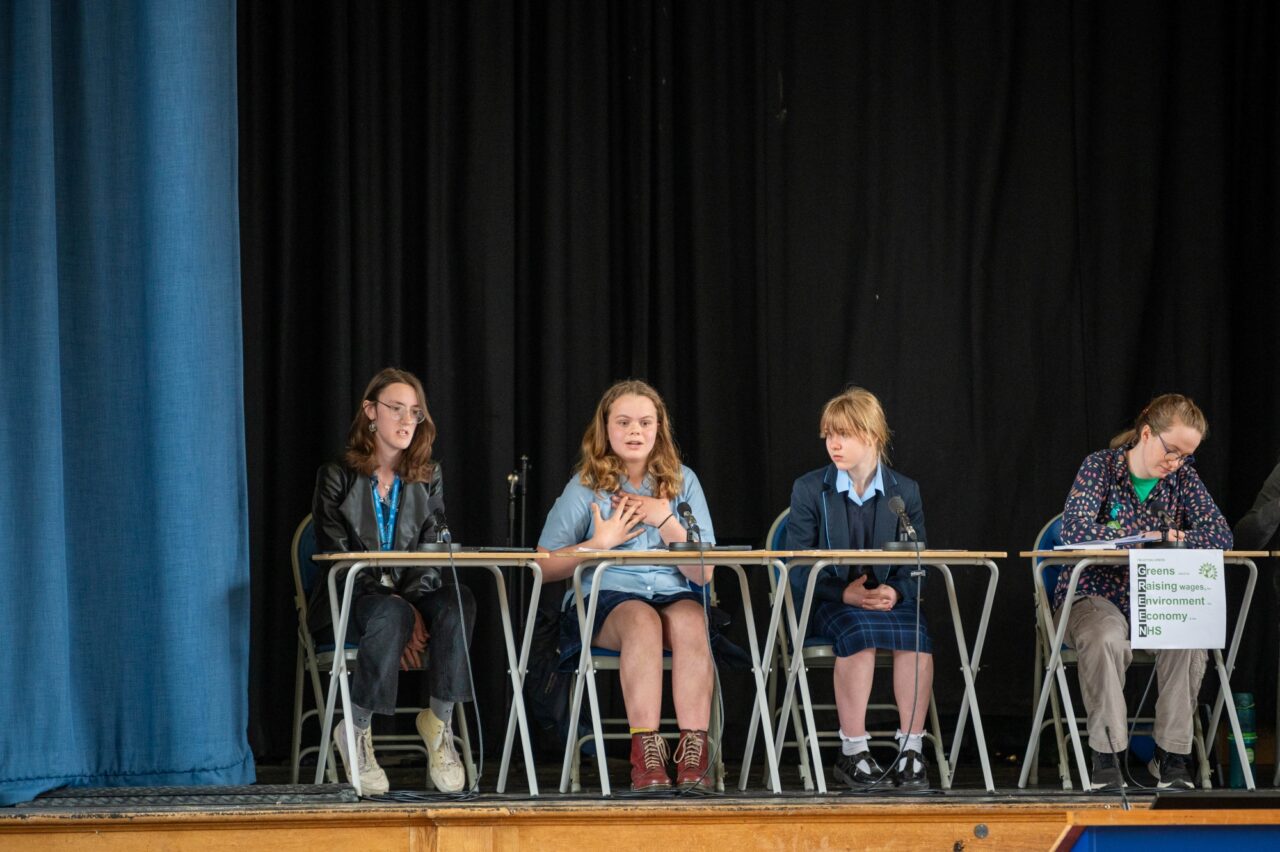Girls in Economics
Getting more girls into Economics – Why it’s important
Over the past five years (2017-2022), 44 students have left Headington School to study Economics at university. If you broaden that category to include Management, Finance and Business courses, the number swells to 76. That’s 15 per year!
As Head of the Economics Department, this is a record that I am incredibly proud of. Since 2017, Economics at Headington has regularly attracted a large number of A Level students – an average of 30 students per year group – but the fact that so many of them (30 per cent) then go and study the subject at university is testament to the work we do here. They do brilliantly in the subject too, with 84 per cent of the 2022 cohort achieving an A* or A.
| Year | A Level students | IB students | Total |
|---|---|---|---|
| 2017/2018 | 27 | 8 | 35 |
| 2018/2019 | 18 | 5 | 23 |
| 2019/2020 | 28 | 8 | 36 |
| 2020/2021 | 19 | 8 | 27 |
| 2021/2022 | 31 | NA | 31 |
| Five year total | 152 | ||
It is vitally important to have greater female representation in Economics. At a fundamental level, a lack of female representation means a lack of ideas. Or, as Diane Coyle, professor of public policy at Cambridge, said in the Financial Times: “it is simply not possible to do good social science if you are so unrepresentative of society.”
The Economist Magazine – which is led by Zanny Beddoes, its first ever female Chief Editor – has written about this too: “it is time for the dismal science to improve its dismal record on gender … Economics has fewer good ideas than it should and suffers from a skewed viewpoint”.
The criticism that Economics has a skewed (male) viewpoint is not a new idea. It has always been a subject that is almost entirely based on the theories of rich white men – just look at the list of Nobel Prize winners: Samuelson, Kuznets, Hayek, Friedman, Coase, Becker, Nash ad nauseum. But the argument that greater female participation would lead to greater innovation is finding more weight with new research. For example, there is plenty of new evidence to suggest that there are gender differences in views on core economic principles and a wide variety of contemporary policy issues. Various studies have shown that there are statistical differences in the views of male and female economists in critical topic areas such as:
- Females are more likely to support government interventions to solve market failures rather than market-based solutions
- Females are more concerned by environmental protection
- Females believe there are inequalities embedded into the current labour market
- Females are less likely to worry about core economic principles are methodology (full reference to research can be found here)
Another example is to look at the recent development of textbooks. Until recently, Richard Lipsey and Paul Samuelson wrote the default university textbooks. In 2022, Wendy Carlin’s Core Economy is the new default. She put Income Inequality in Chapter 1, not supply and demand. Prof Carlin and her co-authors are steering the conversation away from traditional issues of income and personal wealth and more towards solving the social, environmental and humanitarian issues of today’s world.
All of these results lend support to the notion that gender diversity in policy-making circles may be an important aspect in broadening the menu of public policy choices.
The message is clear: schools, particularly girls’ schools, should care about the number of female students studying Economics at Higher Education because it will make a difference to the policies we get in the future.
How to encourage more girls into economics
I’ve already argued that it’s important for female students to study Economics so we can all benefit from the promotion of new ideas and innovation and better public policy choices.
So, the question now turns to: how?
It’s important to observe at the outset that the number of girls studying Economics at Sixth Form has seen a great deal of growth over the last 10 years or so. In 2009, there were 6,827 female candidates for A level Economics. Ten years on, in 2019, that figure had risen 40% to 9,599. The gender ratio however, has stayed relatively constant at around 2 boys for every girl. There are only three other A Level subjects that have a wider gender disparity in favour of males: Further Maths, Physics and Computing. And that level of under-representation carries through from school through to university, academic careers and work in the city.
I have written before that the gender imbalance at school has nothing to do with maths. It has everything to do with image. Economics has a PR problem. Sarah Smith, Professor of Economics at Bristol University tends to agree: “If you ask [young people] who’s an economist, they’ll say it’s a boring man in a suit,” she said in the Financial Times; “If you ask them what Economics is about, they’ll say it’s money, banking and finance.” Prof Smith’s surveys lead her to conclude that:
Ask 15-17 year-olds what they think economics is about and they mention a few core concepts (demand, supply, markets) but the most common word—by a huge margin—is money. When boys say that Economics would be really interesting (and girls do not) this is the image of the subject that they are talking about.
I have replicated some of those experiment myself and I concur.
So, one obvious solution to attract more girls into the subject is to look at the wider real-life impact of Economics on non-traditional agents. Studies, like Prof Smith’s, have shown that boys and girls have different motivations for choosing their subjects to study; girls frequently rank “contributing to society”, “the environment” and “the opportunity to care for others”. We should focus on these all of the time – not just on open days – but throughout the two-year course. It is pleasing to see that the IB have embraced these ideas in the most recent iteration of their specification; the A Level exam boards have some catching up to do.
A second solution is to expose our students to concepts of finance and money at an earlier age so that they are not seen as unfamiliar by the time the students reach Sixth Form. This is what we are trying to do at Headington with our Entrepreneurial Pathway.
- In Years 7 to Year 8, the girls have a series of PSHE lectures from the Bank of England EconoMe resources.
- In Year 9, we have a £5 Challenge where they are challenged to use their time and energy to ‘grow’ their £5 through entrepreneurship and risk taking while also considering charitable activities.
- In Year 10, the girls can choose to complete an elective subject to study alongside their GCSEs. This is the London Institute for Banking and Finance’s Award in Financial Education. (LIBF AiFE).
- In Year 12, girls can study for the mini MBA, a bespoke collaboration between Hult International Business School and Headington. There is A Level Economics and Business as well.
- Throughout their school life, however, there are also multiple clubs to be involved in such as our Dragons’ Den challenge, Mini (car) project, Economics magazine and Investment club.
One final solution is role models. Role models matter and we should look for opportunities to talk about the work of female economists whenever we can. We live in a time when this should be an easy win: the Head of the IMF is Kristalina Georgieva, the President of the ECB is Christine Lagarde, the Secretary of the US Treasury is Janet Yellen, the Director of WTO is Ngozi Okonjo-Iweala and one of the most recent winners of the Nobel Prize for economics (2019) is Ether Duflo. These are all organisations that A Level students must study as part of their course.
But there are reading lists too. My students frequently tell me that the economic authors they find most interesting are the likes of Dambisa Moyo, Diane Coyle, Mariana Mazzucato and Kate Raworth. At Headington, we have been lucky enough that Prof Coyle and Prof Raworth have been to school to speak directly to our students in the past few years.
Ultimately, if schools can frame the subject of Economics as being less about money – but, equally, try to tackle the issue of money earlier on in our students’ school lives – and expose our students to work of female economists more often, then I would expect the number of students choosing to study economics to grow. That is our challenge.



